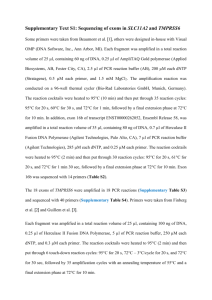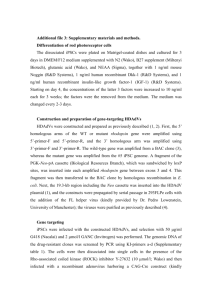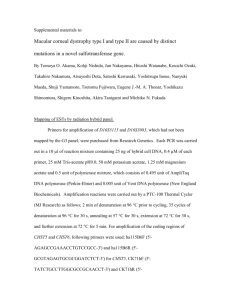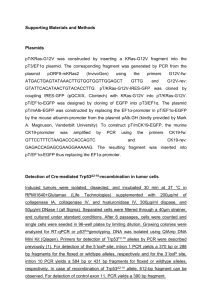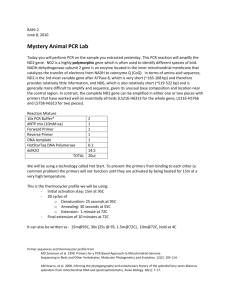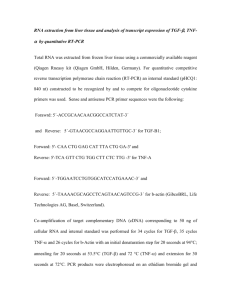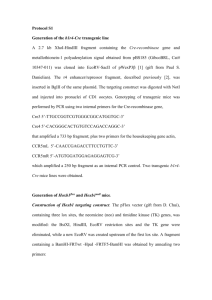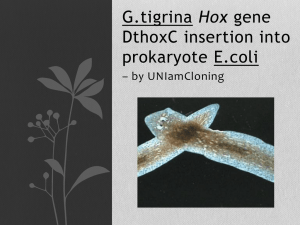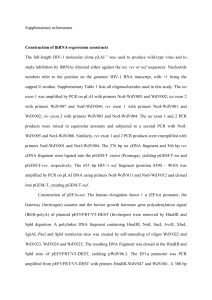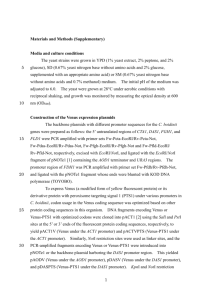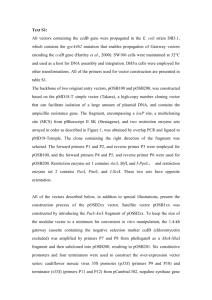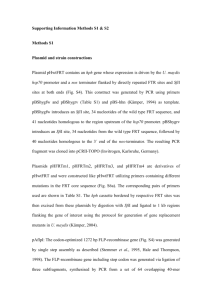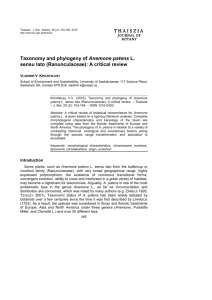TPJ_4869_sm_SupplementaryInformationLegends
advertisement
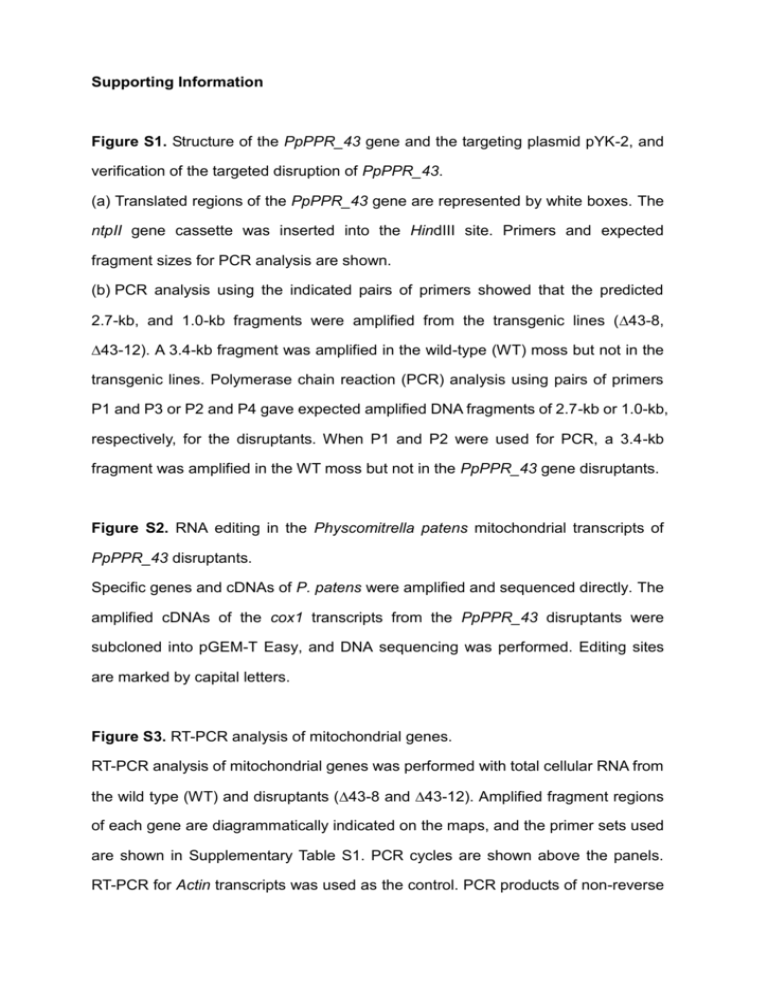
Supporting Information Figure S1. Structure of the PpPPR_43 gene and the targeting plasmid pYK-2, and verification of the targeted disruption of PpPPR_43. (a) Translated regions of the PpPPR_43 gene are represented by white boxes. The ntpII gene cassette was inserted into the HindIII site. Primers and expected fragment sizes for PCR analysis are shown. (b) PCR analysis using the indicated pairs of primers showed that the predicted 2.7-kb, and 1.0-kb fragments were amplified from the transgenic lines (43-8, 43-12). A 3.4-kb fragment was amplified in the wild-type (WT) moss but not in the transgenic lines. Polymerase chain reaction (PCR) analysis using pairs of primers P1 and P3 or P2 and P4 gave expected amplified DNA fragments of 2.7-kb or 1.0-kb, respectively, for the disruptants. When P1 and P2 were used for PCR, a 3.4-kb fragment was amplified in the WT moss but not in the PpPPR_43 gene disruptants. Figure S2. RNA editing in the Physcomitrella patens mitochondrial transcripts of PpPPR_43 disruptants. Specific genes and cDNAs of P. patens were amplified and sequenced directly. The amplified cDNAs of the cox1 transcripts from the PpPPR_43 disruptants were subcloned into pGEM-T Easy, and DNA sequencing was performed. Editing sites are marked by capital letters. Figure S3. RT-PCR analysis of mitochondrial genes. RT-PCR analysis of mitochondrial genes was performed with total cellular RNA from the wild type (WT) and disruptants (43-8 and 43-12). Amplified fragment regions of each gene are diagrammatically indicated on the maps, and the primer sets used are shown in Supplementary Table S1. PCR cycles are shown above the panels. RT-PCR for Actin transcripts was used as the control. PCR products of non-reverse transcribed (–RT) samples were examined as the negative control. Table S1. Oligonucleotide primers used in this study. 2


